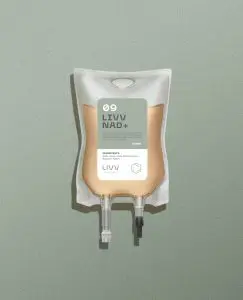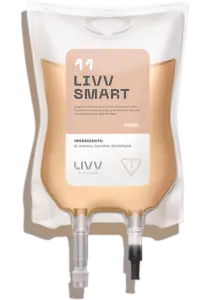Blog
MS – Multiple Sclerosis – What Are the TOP Treatments?

MS – Multiple Sclerosis – What Are the TOP Treatments?
Multiple Sclerosis (MS) is a disorder that affects the spinal cord and brains, resulting in various severe symptoms like problems with sensation, balance, leg movement, arm movement, and vision. It is a lifelong illness that can cause mild or severe disability.
The average life expectancy of people who have Multiple Sclerosis is reduced significantly, and the condition appears in people in their 20s or 30s. It is 2-3 times more prevalent in females than males, and it is possible to treat the signs of MS.
Below we look at the types of Multiple Sclerosis and the TOP treatments option on offer.
Four Types of Multiple Sclerosis
The four types of multiple Sclerosis show how the condition acts on your body through different stages. They are listed as follows:
- Relapsing-Remitting MS A(RRMS)
The RRMS is present in about 85% of all the patients diagnosed with this disorder. It is the most common of all forms of the disease.
People with this type of MS experience temporary periods called exacerbations, flare-ups, or relapses when the initial symptoms appear.
- Secondary-Progressive MS (SPMS)
MS symptoms worsen over time, and the patient can experience or fail to experience remissions and relapses. Most people with RMMS will transmit to this stage at some point.
- Primary-Progressive MS (PPMS)
The third type of MS is not common, with only 10% of people with this condition reaching this level. It is a stage with slow worsening symptoms with no remissions or relapses.
- Progressive-Relapsing MS (PRMS)
Only 5% of patients reach this stage. The symptoms get worse steadily with acute relapses and no remissions.
Patients with PRMS can or fail to recover.
Multiple Sclerosis TOP Treatment Options
Managing Multiple Sclerosis is a continuous process that begins with the onset of the first symptom and continues throughout the disease. It is never early or late to seek high-quality and comprehensive treatment of MS.
Some of the TOP treatments of MS include:
- Abortive Therapies
The first stage of MS is treated using abortive therapies. Here the patient experiences neurological symptoms for about 24-48 hours without having a metabolic condition like a fever.
Exacerbations interrupt the way the body functions, and the aim is to accelerate the recovery process. Steroids are usually prescribed for acute exacerbations of signs to reduce the severity and shorten the attack duration.
The steroids used in this stage are called glucocorticoids, and they help to reduce inflammation. These medicines can also be used to treat other conditions like asthma and allergic reactions.
The steroids are administered through the intravenous (IV) method via a vein in the arm once per day for about 3-5 days. Sometimes the IV treatment can be followed with pills for about 1-2 weeks.
- Preventive Therapies
The Food and Drugs Administration has approved different treatment methods for MS over the past two decades. This reduces the severity and frequency of the MS exacerbations or reverses the MS’s worsening stages two to four.
Preventive therapies include:
Interferon Beta-1a. Beta interferon is given once per week through Intramuscular injection or three times per week when injected under the skin.
Interferon Beta -1b. It is a different form of Beta interferon given after a day through an injection under the skin. Interferon Beta- 1b frequency also depends on the type of therapy the doctor recommends.
Beta-1a and Beta-1b follow the same principle of inhibiting targeted immune system processes and cells from reducing the inflammatory process resulting in MS. The two treatments can cause some side effects, which include:
- Mild irritation and redness at the injection area
- Flu-loke symptoms like achiness, fatigues, chills, and fever
- Change in liver function
- Change in the menstrual cycle
- Depression
Your blood should be tested regularly when taking the Beta treatment approach.
Glatiramer Acetate. It is a synthetic protein with the same structural formula as myelin and is injected under the skin. The protein encourages the immune system to release more anti-inflammation cells to ease the inflammation caused by Multiple Sclerosis.
The treat can result in various side effects, such as:
- Itching, swelling, and redness at the injection area
- Some people can experience a post-injection reaction like shortness of breath, a feeling of faintness, racing of the heart, and flushing
Glatiramer acetate and Interferons are administered through injection, and the government has developed programs to educate the home caregiver on how to do it.
Natalizumab. It is a monoclonal antibody given through the IV treatment via the vein in the arm once per month. The therapy helps block immune cells called lymphocytes from reaching the central nervous system – spinal cord and brains.
The treatment’s main side effect includes a rare, serious, or even fatal brain damage called progressive multifocal leukoencephalopathy.
Mitoxantrone. Mitoxantrone is a chemotherapy drug for treating worsening RRMS and SPMS. It is administered through IV treatment every 90 days.
The drug suppresses the immune system and reduces the number of cells, causing inflammation in Multiple Sclerosis. Mitoxantrone is toxic and only administered a few times in a person’s lifetime and can result in cardiotoxicity.
- Symptomatic Therapies
Some symptoms of MS can be permanent, while others are transient. It is crucial to have effective communication between the MS caregiver and the patient.
The treatment aims to manage these symptoms and improve life quality while maintaining the body’s independent functions. Here the treatment can include rehabilitation techniques like occupational and physical therapies to maintain and enhance normal function.
The patient is requested to seek assistance from different specialists, including pain management experts, psychiatrists, and urologists.
Symptomatic therapies are the way to go for the long-term treatment of Multiple Sclerosis condition.
Final Words
Activities such as yoga, exercise, massage, meditation, relaxation techniques, and acupuncture can improve your physical and mental health, and there is evidence they can manage MS symptoms. It is also vital to know where to find the needed treatment and qualified doctors and specialists.


